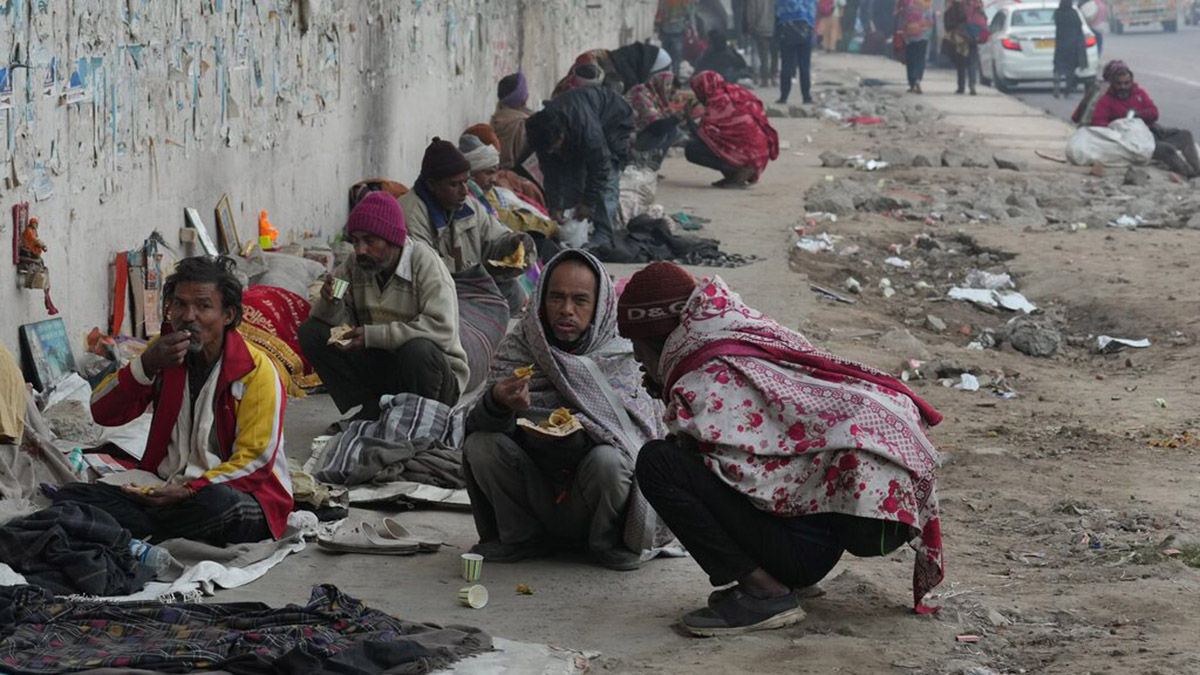There is a World Poverty Clock (WPC). Perhaps I should explain and it is best to use the words of WPC. “The World Poverty Clock provides real-time poverty estimates through 2030 for nearly every country in the world. It monitors progress against Ending Extreme Poverty, which is the UN’s first Sustainable Development Goal (SDG).
Funded by the International Fund for Agricultural Development (IFAD) and the Federal Ministry for Economic Cooperation and Development of Germany, the World Poverty Clock shows the number of people living in extreme poverty worldwide, disaggregated by age, gender and rural/urban location.
‘Target Escape Rate’ is the average poverty reduction (per second) needed to achieve SDG1 by the end of 2030. The ‘Current Escape Rate’ is the current speed of poverty reduction between the year before and the year after the current year.” Cross-country comparisons of development and deprivation are fraught with problems since comparable data are difficult to get. This becomes even more so if subjective responses to questionnaires are used. WPC doesn’t do that. It uses objective data. SDGs (sustainable development goals) are objectives the world should have attained by 2030 and there is a nested structure of goals, targets and indicators.
There are 17 SDGs and the first one is “no poverty”. Goals, by their very nature, are at a level of abstraction and need to be pinned down through targets and indicators. The seven targets for SDG-1 are: (1) eradicate extreme poverty; (2) reduce poverty by at least 50 per cent; (3) implement social protection systems; (4) equal rights to ownership, basic services, technology and economic resources: (5) build resilience to environmental, economic and social disasters; (6) mobilise resources to implement policies to end poverty; (7) create pro-poor and gender-sensitive policy frameworks.
I have always been sceptical about the way SDGs were developed, unlike the more precise MDGs (Millennium Development Goals) that preceded them. Many years ago, travellers on trains used holdalls. SDGs are a bit like that, bung everything in, irrespective of whether there is focus or not. To my jaundiced eye, in that list of seven, the only ones that really matter are (1) and (2). They are precise and progress towards them can be quantified and measured. In passing, no timeline is stated for (6) and (7). They are open-ended, illustrating the vagueness. The others are to be achieved by 2030.
Impact Shorts
More ShortsIn the nested SDG structure, targets are further refined through indicators. On (1) and (2), the indicators are (I) By 2030, eradicate extreme poverty for all people everywhere, currently measured as people living on less than $1.25 a day; and (II) By 2030, reduce at least by half the proportion of men, women and children of all ages living in poverty in all its dimensions according to national definitions. Post-Covid and following geo-political tensions, all countries have deviated from desired SDG trajectories. But any cross-country tracking shows that India has deviated relatively less.
In (1) and (2) there is a reference to a poverty line. A poverty line is a minimum basket required for subsistence. As economies develop and prosper, poverty lines also evolve. For example, in the US, the poverty line depends on the number of individuals in the household. For individuals (no others in the household), I think the current poverty line is around $15,000. Even in optimistic projections, India will not achieve that kind of per capita income number by 2047. Having said this, India has a long tradition of conceiving poverty lines. Initially, because expectations were that the State would provide services like health and education free, the focus of the poverty line was only on food. The last official poverty line is the Tendulkar poverty line.
Under the Chairmanship of Suresh Tendulkar, the Expert Group (constituted by the then Planning Commission) submitted its report in 2009. This replaced the earlier (1997) Lakdawala poverty line. Subsequently, in 2014, there was a Rangarajan Committee report. But that was never officially accepted. Notice that the historical Planning Commission never developed poverty lines. It left it to external experts (Lakdawala, Tendulkar, Rangarajan). Using those externally determined poverty lines, Planning Commission computed poverty rates, separately for states, disaggregated rural and urban. Through the multi-dimensional poverty index (MDPI), Niti Aayog has also outsourced. I have two problems with that. (a) It has been outsourced to Oxford; (b) MDPI is not quite poverty measurement as we understand it.
That’s the national poverty line. To make international comparisons possible, there is also the concept of international poverty, originally set at an expenditure of $1 per person per day. In 2005, this was increased to $12.5 per person per day, the figure mentioned in (1). Subsequently, it has been increased even more. MoSPI (Ministry of Statistics and Programme Implementation) has recently released a fact sheet for the 2022-23 monthly per capita consumption expenditure (MPCE). Detailed unit-level data and figures for the next round of the survey are still awaited. But based on this, WPC has computed only 34,458,941 individuals in India (2 per cent of the population) live in extreme poverty. The ‘target escape rate’ is 10.09 people per minute. But the ‘current escape rate’ is 11.47 people per minute. This is good news.
The author is the chairman of the Prime Minister’s Economic Council and a well-known Sanskrit scholar. Views expressed in the above piece are personal and solely that of the author. They do not necessarily reflect Firstpost_’s views_.


)

)
)
)
)
)
)
)
)



